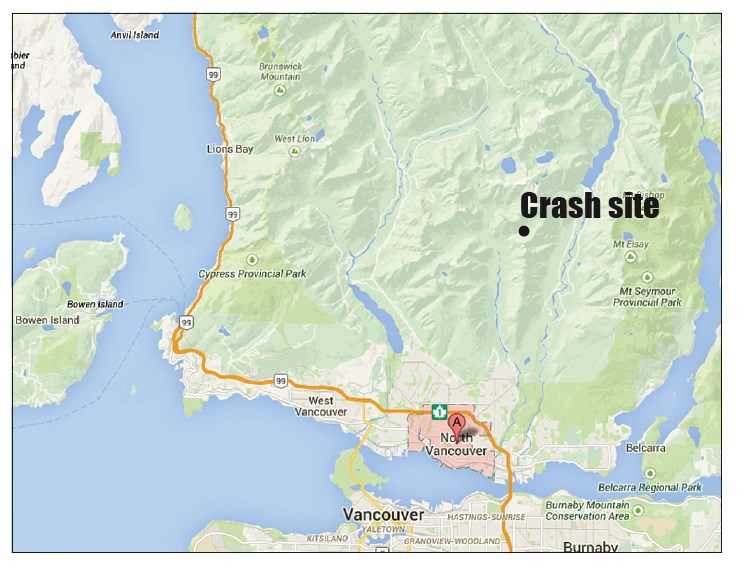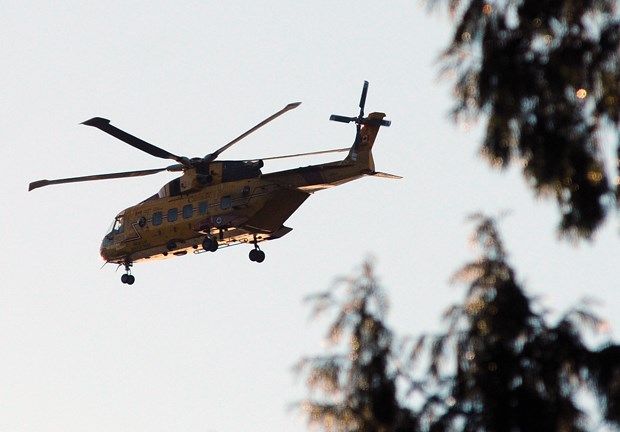Authorities have recovered the bodies of two pilots killed in a plane crash in the North Shore Mountains on Monday.
Carson Air flight 66 took off from Vancouver International Airport just before 6:45 a.m. en route to Prince George but it disappeared from radar about five kilometres north of Mount Seymour 20 minutes later.
Members of the North Vancouver RCMP, Canadian Forces' Joint Rescue Co-Ordination Centre in Victoria, Talon Helicopters and North Shore Rescue had been combing the backcountry between Grouse Mountain and Cathedral Mountain, in hopes of spotting any sign of the twin-engine Fairchild Swearingen Metroliner for much of Monday and Tuesday.
North Shore Rescue members and Metro Vancover staff brought in by Talon first located some crash debris on Monday afternoon and returned early Tuesday morning to find the plane in very densely treed, steep terrain not far from the trail that leads to Coliseum Mountain.

“North Vancouver RCMP has now confirmed that the reported missing plane has been located, including the main fuselage with the two pilots inside the cockpit,” said Cpl. Richard De Jong, North Vancouver RCMP spokesman at a press conference Tuesday afternoon. “Unfortunately, the two male pilots were found deceased.”
The pilots were two men from the Vancouver area, aged 33 and 35. The B.C. Coroners Service has since recovered the bodies. At the request of their families, the men’s names are not being released.
The investigation into the cause of the crash has now been handed over to the Transportation Safety Board.
The plane had no cockpit voice or data recording systems, so the investigation will be limited to studying the scene and the wreckage, according to Bill Yearwood, regional manager of aviation accident investigations for the TSB.
There was no emergency distress call from the plane and the radar signature indicated a very steep descent from 7,000 feet above sea level to 3,000 feet where the wreckage was found, Yearwood said.
“(It) gives us an idea that whatever happened, happened suddenly,” Yearwood said. “At this point, the way the aircraft appeared to come out of the sky and descent rapidly, questions are focused on the controllability of the aircraft.”
Yearwood credited North Shore Rescue’s members with finding the plane.
“I have to give kudos to those volunteers on the ground. It likely would have been many days if not weeks or maybe almost impossible to find from the air,” he said. “The trees are not damaged and there is no scar on the ground.” he said.
The plane was carrying a load of “paper product for banking information,” Yearwood said.
“The wreckage is close to the trail that’s commonly used in the summer, however, all of that will be removed,” he said.
The final report on the cause of the crash will likely take several months. The company has no record of accidents or investigations, Yearwood said.
Mike Danks, North Shore Rescue team leader, said he was proud of the roughly 25 volunteers who aided in the search.
“It's not a call we get all the time but I'm very proud of how our members responded and with the urgency that they undertook. We had a lot of people leave work (Monday) to make sure they were there,” he said.



